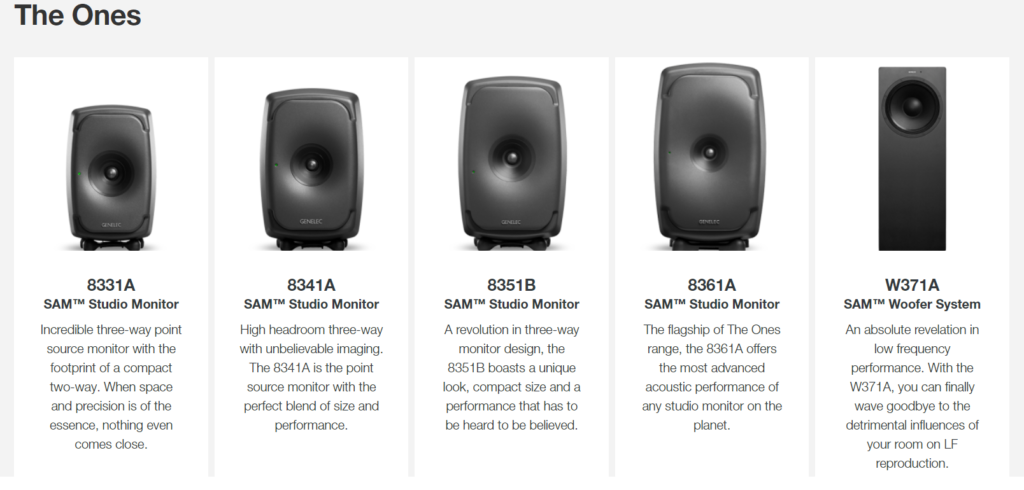Research from acoustics scientist Dr. Floyd Toole indicates that bass quality accounts for about 30% of your system’s sound quality. So, I’ve experimented with target curves that raise the bass loudness relative to other frequencies and added bass traps to reduce its decay times to improve my system performance and satisfaction. My experiments are on top of already “perfectly time aligned” and EQ’d subs and main speakers via FIR convolution correction filters using Audiolense software. OmniMic software is used to measure decay times and frequency response. I’ll summarize my experience below.
Room Layout and Bass Trap Types
My living room layout (25′ x 11.25′ x 8′) is open on the left and right sides to a dining room and foyer and long hallway respectively. At the back of the room on the right side it’s open to a den. While these openings may act like bass traps allowing bass waves to escape before bouncing back with less energy, there is still much that can be done to improve the overall bass quality. I use 25 bass traps, most in the listening room but 4 in a foyer/hallway, and 1 very large DIY in the dining room and den. Six traps are “pressure” types that use a membrane to absorb bass, while the rest are “velocity” type traps that use insulation and friction to turn bass waves into heat. Typically, pressure bass traps work below about 100Hz while velocity traps work above it. Therefore, they are complimentary and both are needed when a system plays to the lowest bass notes. Pictures of my room and trap locations follow.
Front Wall Trap Placement

Picture 1 above shows large bass traps in each front wall corner extending upwards to the ceiling.
Left Side Wall Trap Placement
Picture 2 above shows black membrane traps on the floor against the wall (with boards atop) and a black velocity trap on its side on the far left. Additional traps are behind the couch.
Back Wall Trap Placement
Picture 3 above shows the back wall with alternating white RPG Skyline diffusion and GIK Monster Bass Traps with FlexRange elevated above and behind the couch, while more GIK traps sit behind the couch on the floor.
Bass Loudness
It’s worth noting my preferred target curve to boost the bass frequency loudness is as follows:
250Hz is XdB
125Hz is X+1dB
63Hz is X+3dB
30Hz is X+6dB
This is a gentle almost logarithmic increase to partially-match our hearing’s “equal loudness curves.”
Bass Trap Positioning Affects Decay Times
If bass wavelengths are long and omni-directional, then traps can just be spread around the room I thought. Well, in my room, it turns out that placing traps in the adjoining rooms and hallway helps to reduce bass decay times but not by as much as when the traps are moved and placed closer to the mic or speaker positions. The membrane pressure bass traps for <100Hz were more effective when placed in a three-surface corner and in front of rigid concrete support walls where bass pressure is highest, and less effective in front of less rigid drywall etc. The insulation filled velocity bass traps for >100Hz were sensitive to air space depth behind them, and I was surprised to find some places where they made little effect – not every wall is equal. Trial and error and measurements helped find their best positions.
Calculating Decay Times
If your room is enclosed (and not open to the rest of the house), then one of the theoretical equations may work for you:
Decay Time = 0.3 X [(Cubic Room Volume/3532)(1/3)]
Divide your cubic room volume by 3532, then take the cubed root, and then multiply it by 0.3 which equals the average decay time based on room size.
However, if your room is an “open concept” or “great room” open to other rooms and hallways like mine, then the theoretical equation may not be best. I prefer to measure decay time in 1/3 octave intervals and take the average from 20-20khz and then add/subtract 15% to represent an upper/lower limit respectively. Each channel is measured separately to spot any anomalies and then their averages are combined as a single average decay metric.
Bass Ratio and “Warmth”
Perceived bass warmth is its loudness and decay times relative to mids/high frequencies and is a personal preference. Perceived bass warmth factors include:
> frequency response (e.g. desired target curve to boost bass frequency loudness)
> decay time (e.g. absorption amounts)
> room acoustics (e.g. dimensions, materials, furnishings & acoustic treatments)
> personal preferences (e.g. preferred musical genres)
Musical genres seem to influence how much bass warmth we enjoy.
> Genres with More Bass Warmth: jazz, blues, R&B, soul, classical, reggae, folk
> Genres with Less Bass Warmth: electronic dance, rock, metal, pop, hip-hop
In attempts to quantify perceived bass warmth, I borrowed the “Bass Ratio & Warmth” metric found in F. Alton Everest’s book “Master Handbook of Acoustics” used for large spaces like auditoriums and concert halls. It uses 2 bass octaves (centered at 125Hz and 250Hz) and compares it to the 2 midrange octaves above them (centered at 500hz and 1KHz). Because it’s based on a ratio, it should work for smaller domestic rooms also I recon. While large spaces use the RT60 metric for decay time, I prefer the T40 for domestic rooms. It’s calculated as:
Bass Ratio & Warmth = [T40(125hz)+T40(250Hz)] / [T40(500hz)+T40(1khz)] = should be from 1.1 – 1.4
This means that the 2 bass octaves used in the formula have decay times 10% – 40% longer than the 2 midrange octaves (i.e. a 1.4 value is warmer than 1.1).
At one point I managed to get my bass ratio down to 1.2 which sounded a tad thin based on what I was used to hearing previously. To compensate, I boosted the sub’s volume a bit. Today’s ratio is 1.3 which sounds better to my ears likely because it is closer to how I’ve always had it but I no longer boost the sub’s volume. I might experiment with shifting the entire equation down one octave as I suspect my music with synthesized bass lines run deeper than an orchestra, so the calculation would be:
Bass Ratio & Warmth = [T40(63hz)+T40(125Hz)] / [T40(250hz)+T40(500Hz)] = maybe 1.2 – 1.5?
If bass warmth is affected by relative loudness and decay times, then how do we combine them into a workable ‘model?’ One way is to recognize that I can get bass warmth under two opposing situations: (A) short bass decay times but louder bass frequencies, and (B) longer bass decay times but with attenuated bass frequencies.
The downside of (A) Short Bass Decay Time with Louder Bass Frequencies
> thin sounding as if harmonics are missing
> lacks a certain fullness
> possible listening fatigue from having the bass volume turned higher
The downside of (B) Long Bass Decay Time with Attenuated Bass Frequencies
> muddy or boomy sound where individual bass notes are not defined resulting in reduced clarity
> less clear midrange
> bass modes may be triggered for an unsmooth frequency response
And in between these two opposing situations is a continuum of possible situations that I attempt to show in Chart 1 below.
Tips
- For starters, the subwoofers need to be perfectly time aligned with the main speakers as a minimum. Use measurement software and impulse responses or get equipment like miniDSP or with DIRAC or ARC capabilities. or Audiolense to generate FIR convolution files. If you only have analog sources then pull the subs ahead of the mains due to the sub’s group delay until they sound lockstep with the mains.
- EQ bass peaks using FIR filters ideally or use DSP within JRiver/ROON or miniDSP, or graphic eqs as a last resort. Measurements are a must.
- Install both types of bass traps to augment each other and extend the absorption down to 40Hz or lower. I’ve found that open concept rooms will naturally have lower high frequency decay times so you’ll likely need more bass traps to try and bring the bass decay times down and in line with the mids/highs compared to an enclosed room.
- Take decay measurements as you move bass traps from one location scenario to another – it’s tedious work. Try and achieve different Bass Ratios to hear how different they sound and take notes so you can revisit your best sounding scenario. You want to strive for as flat a decay line through mids/highs with the bass about doubling the mids’ decay time. Aim for 200 – 500ms decay time with the high end for stereo and the low end for Home Theatre. Each speaker should have about the same decay times across the tested frequencies (i.e. little inter-speaker decay variance).
- Try and preserve your mids/high decay times through reflections of hard surfaces like diffusion, or bass traps that have a membrane of sorts that reduce its absorbency of mid/high frequencies (e.g. GIK Monster with FlexRange). Air acts as a natural absorber from +2KHz, and so does an open concept room that doesn’t allow the highs to reflect back with much energy.
- Experiment with different Target Curves that boost low bass frequency loudness.
Want Less Bass Boom/Warmth?
If you want less bass warmth then: (i) move the starting point of the bass loudness boost from 250Hz to 150Hz or 100Hz (ii) use a less steep target curve to reduce the amount of boost at the lowest frequencies (iii) move speakers away from walls that reinforce bass (iv) add bass traps to reduce decay times and modal ringing (v) move your listening chair (vi) EQ out bass peaks.
When assessing the perceived warmth of bass, consider frequency response loudness levels across bass and midrange frequencies and their decay times.

Chart 1 above shows how bass loudness and bass decay times can be combined to provide good bass quality from subtle to pronounced warmth. For the Silo, Kevin Fielding.
Kevin Fielding offers acoustic measurements services and serves the greater Toronto area in person and will consult remotely with people farther away. He is reachable at kevinfielding@hotmail.com





